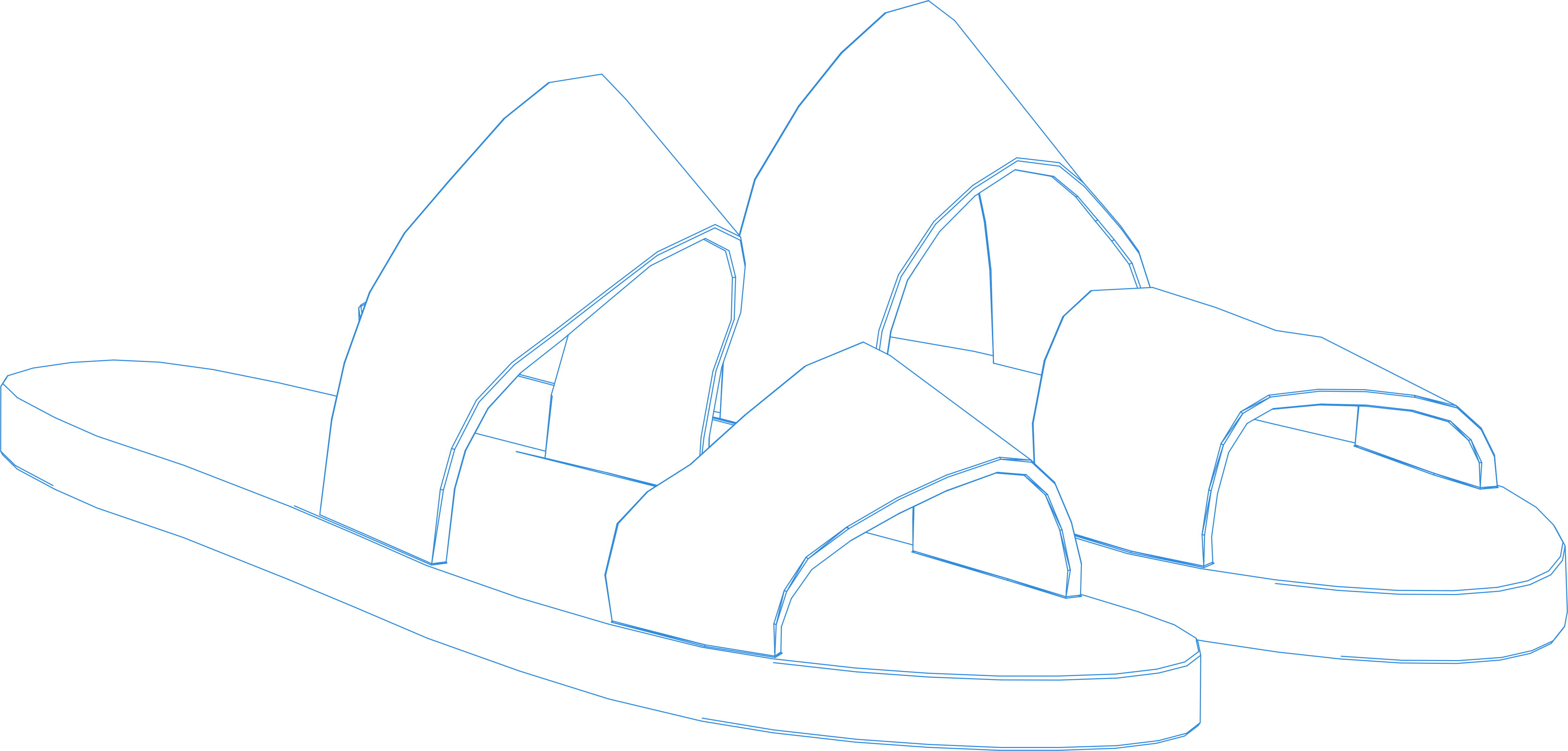
Fozia Ismail
Weaving
with fragments
and fractures
I want to reflect on an archival practice that started off in Somali
food and a questioning the invisibility of African cuisine in publishing to
researching muqalmad (dried camel meat) and cassatte tapes with Somali
community in Bristol. Mostly it’s a question that is rooted in how Somali
people survive now and then.
Dhaqan meaning 'the common thread that connects Somali peoples to their ancestral homelands' (A. A. Ilmi)
What I have learnt through the various food and art enquiries that I
have been engaged in, is that much of that survival is based on a concept of
culture or dhaqan philosophies that
are embodied but always in relation to others (past/living ancestors and
community). Accessing this knowledge can
often be a tense process, excavating parts of yourself not yet known by using
everyday material culture. If done in the spirit of friendship and love as
practiced by the elders we worked with and are inspired by it can also, be one
full of healing, joy and laughter.

In my family (and many Somali families across the
diaspora) cassette tapes would
be sent instead of letters and when these tapes would arrive, they would often
arrive with muqalmad- dried camel meat, an
important part of Somali nomadic culture. Family and friends would listen to
the tapes and share in the camel meat. This was a joyful but also sometimes
painful experience that reinforced a kind of
living in between landscapes. For younger members of the family there was also an anxiety about what to record back to
these unfamiliar voices echoing from this little machine. The aunts and uncles you have never
met as well as the inability to communicate back in a mother tongue that you
were not necessarily fluent in added to the strange experience of
recording your voice back on these cassette tape letters.
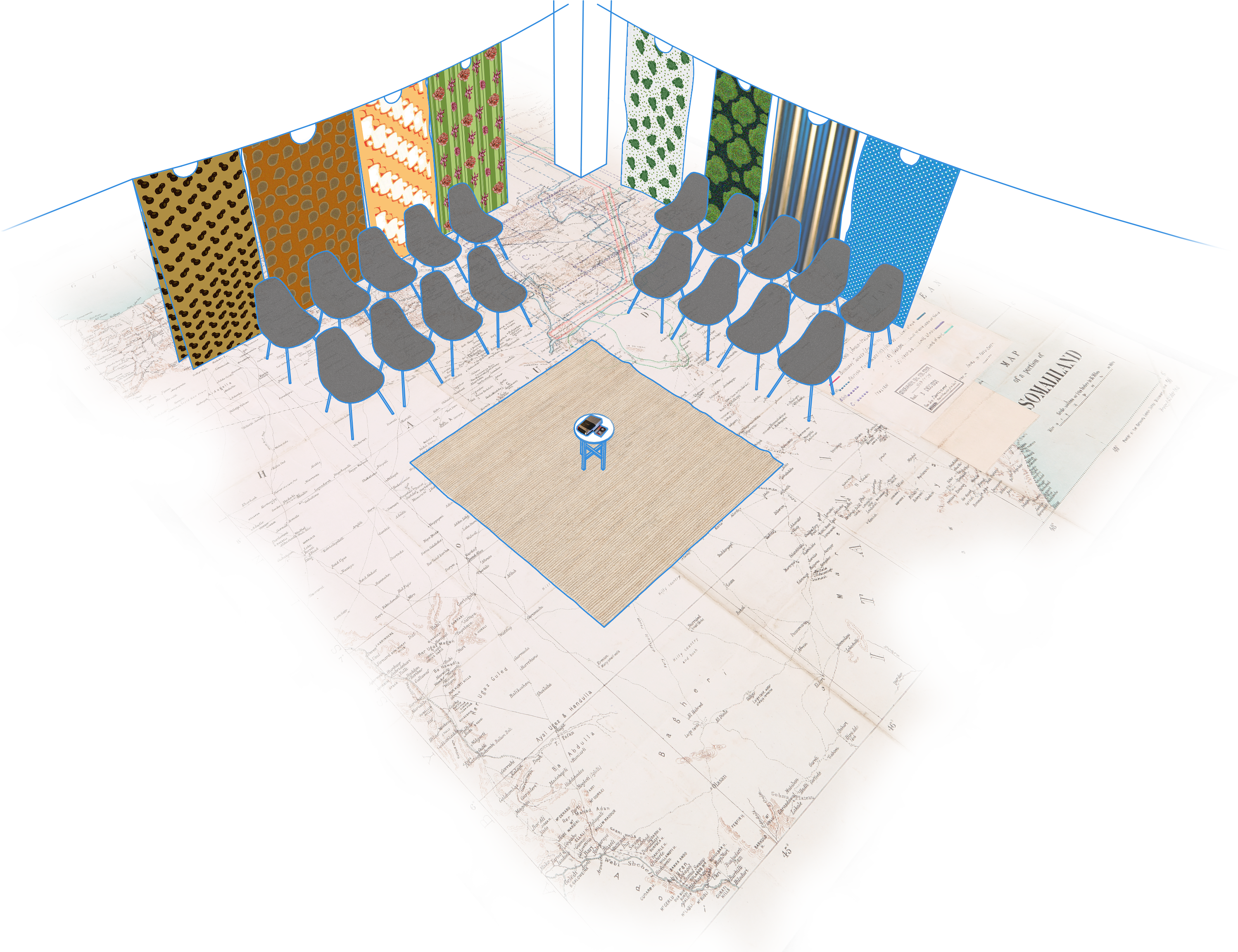
The initial work of Camel Meat & Tapes explored the use of cassette tapes. These tapes became a
valuable vessel for the diaspora to communicate with families they were forced
to leave behind, sharing stories ranging from day-to-day events, to the
intimacies of private life.
In 2019-2020 as part of my Bristol City Fellowship for the Arnolfini gallery I worked alongside two artists (Ayan Cilmi and Asmaa Jama) for a period of 6 months with Somali elders to explore this use of cassette culture in our community. All these sessions were recorded on cassette tapes and digital recorders which were then edited to make a 360-degree soundscape. We wanted to create a soundscape that would envelop and surround us in the musicality of Somali women, whilst exploring the tensions of communication between multiple people and landscapes.
We also worked in and with the British Empire & Commonwealth Archives which are based in Bristol.
In 2019-2020 as part of my Bristol City Fellowship for the Arnolfini gallery I worked alongside two artists (Ayan Cilmi and Asmaa Jama) for a period of 6 months with Somali elders to explore this use of cassette culture in our community. All these sessions were recorded on cassette tapes and digital recorders which were then edited to make a 360-degree soundscape. We wanted to create a soundscape that would envelop and surround us in the musicality of Somali women, whilst exploring the tensions of communication between multiple people and landscapes.
We also worked in and with the British Empire & Commonwealth Archives which are based in Bristol.
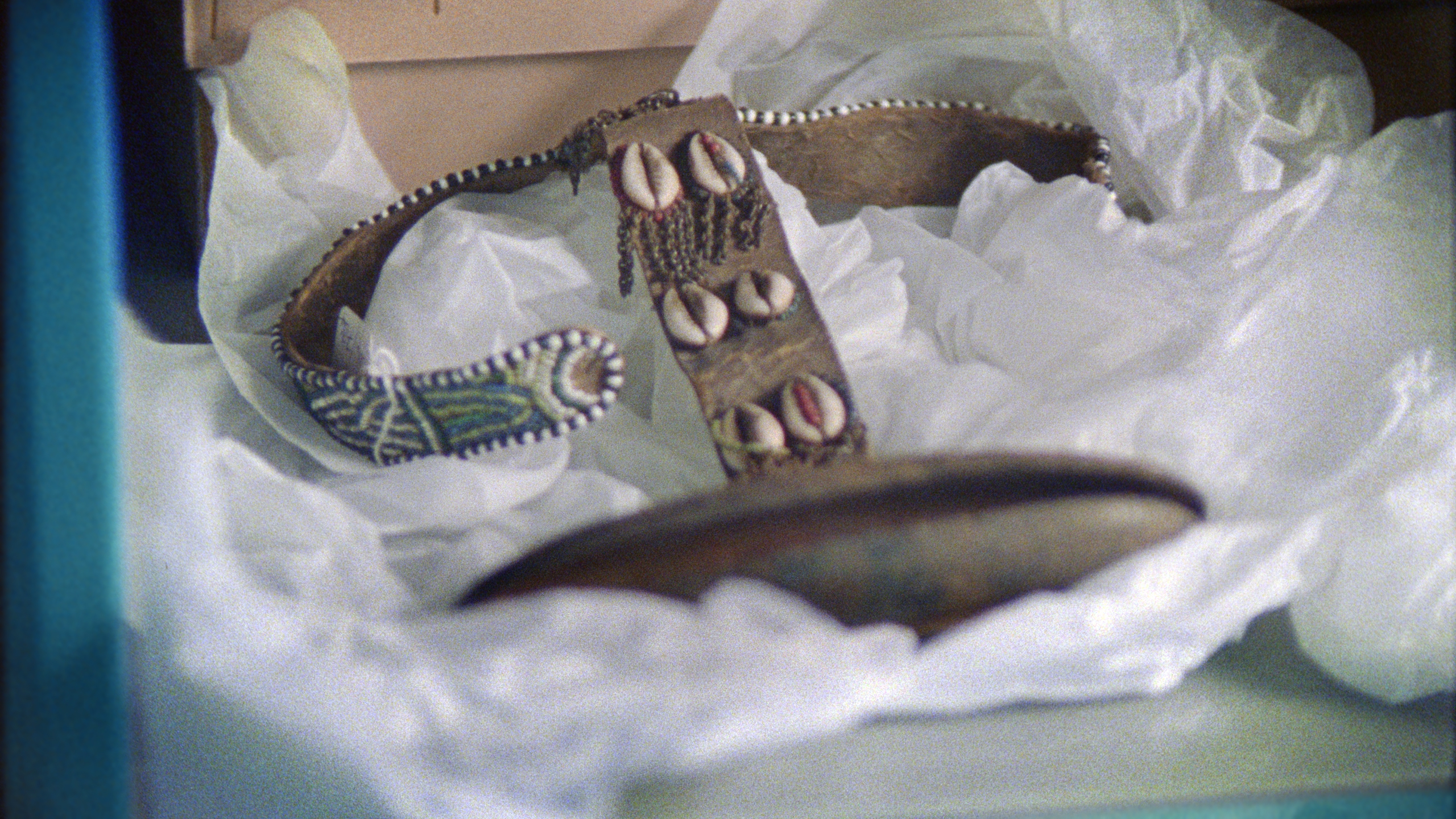
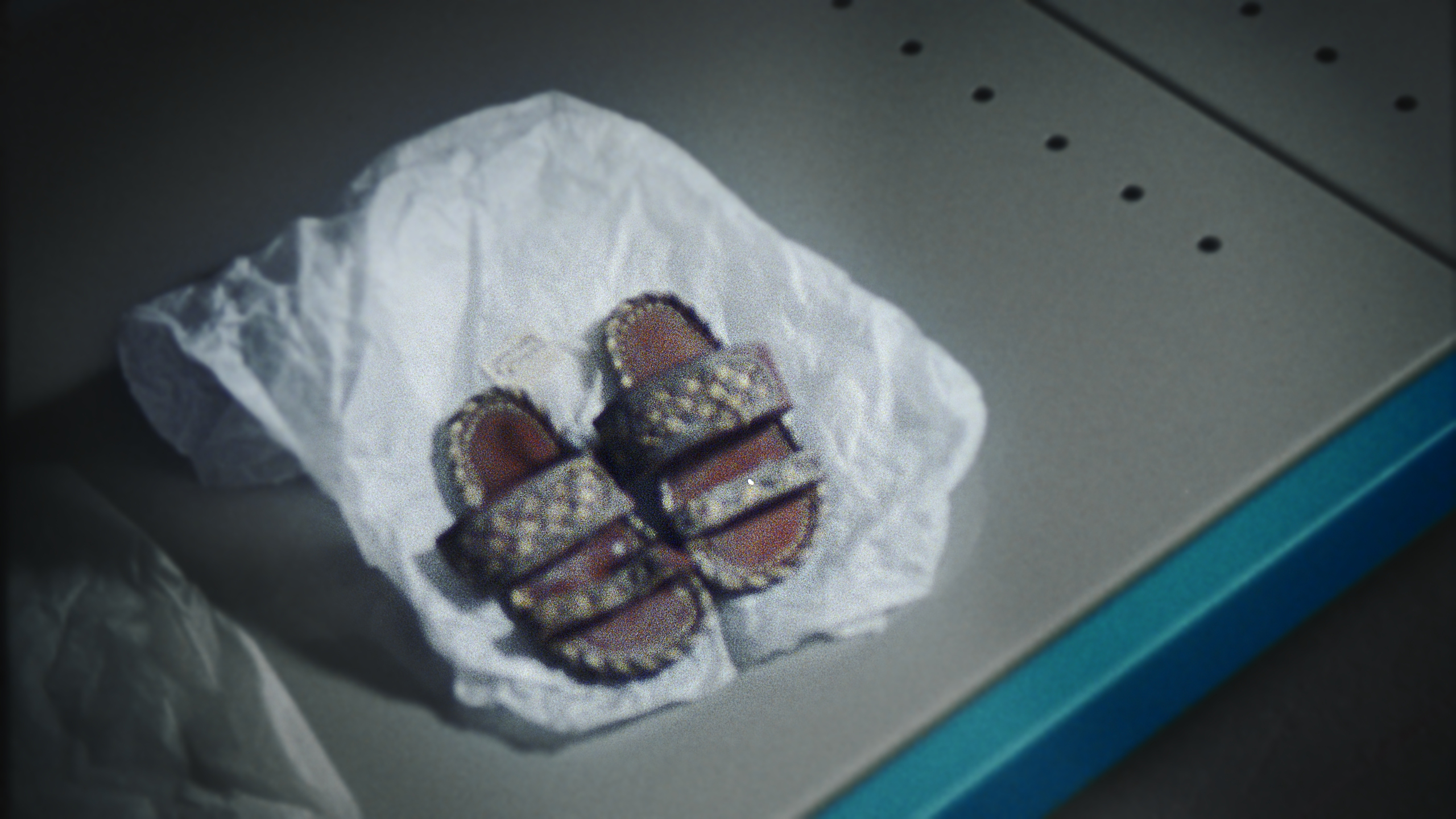
The elders had a session with
Somali objects that were contained in the archive. The response from our elders
to this session was fairly dismissive of the
objects that were collected and a questioning of why there was so much effort
and value placed on objects that were seen as functional everyday items. A pair
of shoes for example that were assumed to be handmade by the collection, was
recognised by the elders as mass-produced item by a well-known factory in the
south of Somalia. Another object which was mislabelled as a food container was
identified by the elders to be a drum.
The ritualistic way in which everyday objects were given a scared quality through being held in the collection was also interrogated. The wrapping up of objects in bubble wrap, fine paper, lovely boxes and the use of gloves repurposed these everyday items into something akin to the parable of the emperor’s new clothes. These objects were not inherently valuable except in relation to their being acquired by the British Empire and Commonwealth Collection. This illustrated the gulf in value judgments between the archive collection and the communities that these objects were taken from. In contrast an object that was considered sacred, a very beautiful Thumbnail Quran, should not have been in the collection according to the elders, partly because it was being stored incorrectly (this was rectified) and because it is an item that could be use of to someone spiritually. There was even a joke made by the elders encouraging us to pocket it, and take back what did not belong there.
This session highlighted to me that this was not where Somali culture was contained. Somali culture is living and this was so beautifully demonstrated by the elders who ended the session by spontaneously singing the Somali independence song when Somali people in the north won independence from British rule. We loved the process of capturing these sonic acts of resistance in response to the archive.
We were deeply aware of the value of the sharing of knowledge that was rooted in Somali consciousness that was taking place in ways that would have a meaningful impact on the way we worked as a collective going forward.
This work led to us forming a Somali feminist art collective called dhaqan collective, which Ayan and I continue to develop. Asmaa Jama has now left the collective but her poetry and insights were a wonderful addition to the first iteration of these inquiries.
Camel Meat & Tapes Part 2 worked with young Somali people to create a soundscape in response to the themes that emerged from the first project. A sort of call and response.
The ritualistic way in which everyday objects were given a scared quality through being held in the collection was also interrogated. The wrapping up of objects in bubble wrap, fine paper, lovely boxes and the use of gloves repurposed these everyday items into something akin to the parable of the emperor’s new clothes. These objects were not inherently valuable except in relation to their being acquired by the British Empire and Commonwealth Collection. This illustrated the gulf in value judgments between the archive collection and the communities that these objects were taken from. In contrast an object that was considered sacred, a very beautiful Thumbnail Quran, should not have been in the collection according to the elders, partly because it was being stored incorrectly (this was rectified) and because it is an item that could be use of to someone spiritually. There was even a joke made by the elders encouraging us to pocket it, and take back what did not belong there.
This session highlighted to me that this was not where Somali culture was contained. Somali culture is living and this was so beautifully demonstrated by the elders who ended the session by spontaneously singing the Somali independence song when Somali people in the north won independence from British rule. We loved the process of capturing these sonic acts of resistance in response to the archive.
We were deeply aware of the value of the sharing of knowledge that was rooted in Somali consciousness that was taking place in ways that would have a meaningful impact on the way we worked as a collective going forward.
This work led to us forming a Somali feminist art collective called dhaqan collective, which Ayan and I continue to develop. Asmaa Jama has now left the collective but her poetry and insights were a wonderful addition to the first iteration of these inquiries.
Camel Meat & Tapes Part 2 worked with young Somali people to create a soundscape in response to the themes that emerged from the first project. A sort of call and response.
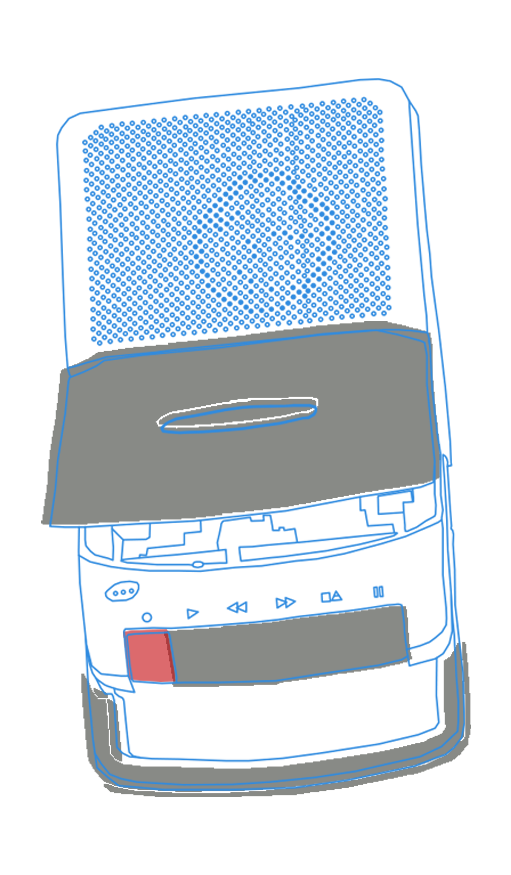
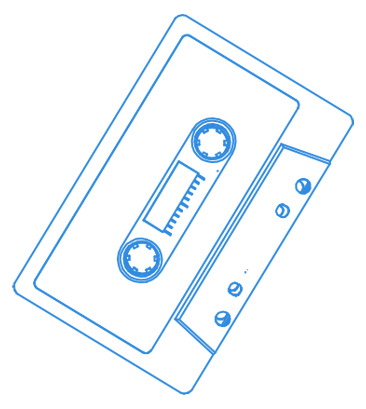
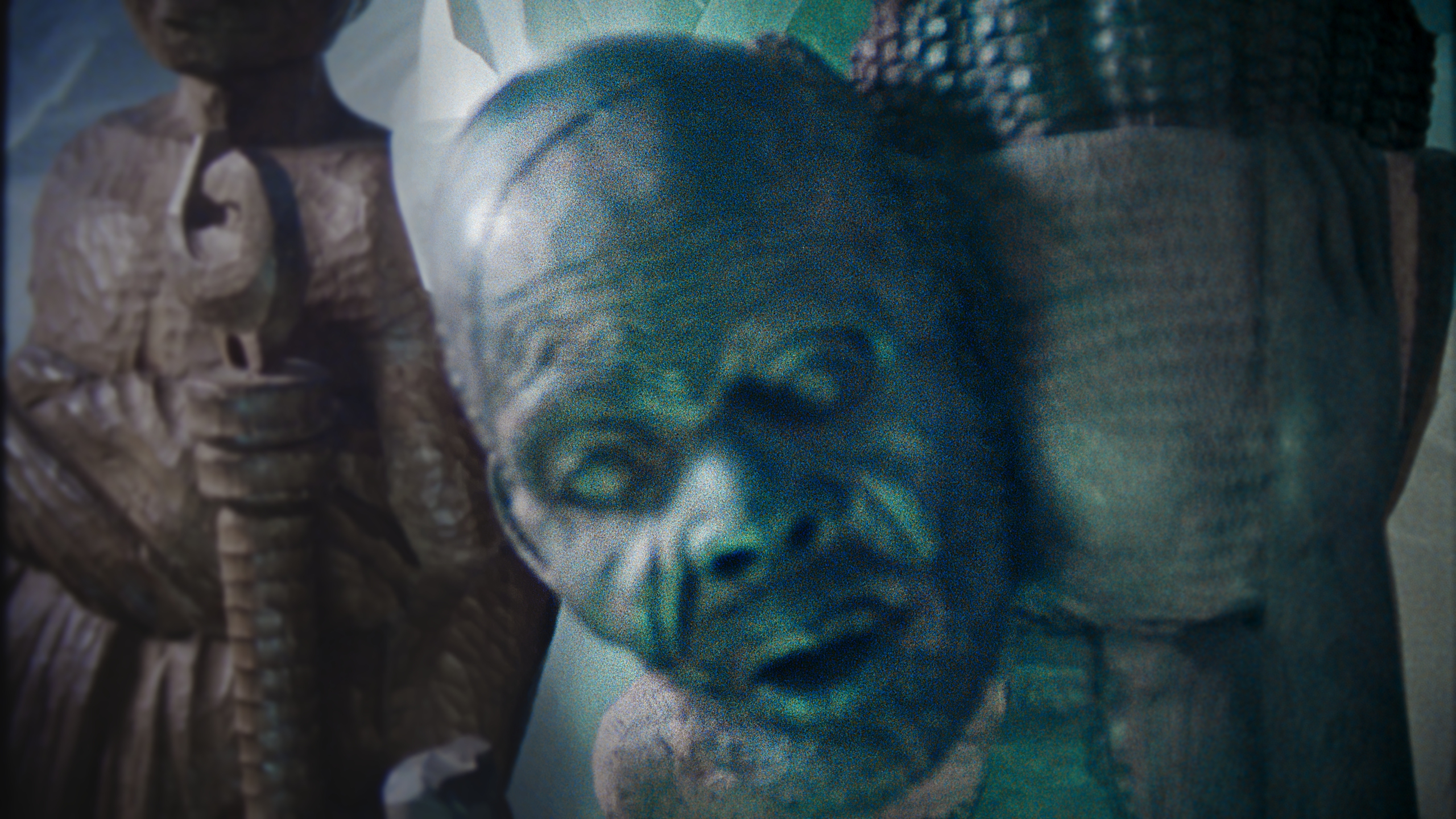
Making the film
We wanted the soundscape that the young people made to connect to the soundscape that the elders made. The young people explored themes such as disconnection and rupture from Somali culture but also the quiet resilience of their parents and grandparents. Underpinning this was a longing to learn more about Somali culture. There were also humorous counterpoints to some of the heavy topics that were explored, which included the deaths of loved ones. So, between thoughts of identity and belonging you have the reality of everyday mundane acts of life, recorded in real time by cassette.
We wanted to impose the voices of the young people on the British Empire & Commonwealth Archive, to centre back those lives that were taken and changed through the actions of empire building by Britain. The film centres a shadowed figure walking through the corridors of the archive, interspersed with shots of objects (a wooden carving of elderly face, stuffed tiger, shoes etc) including the objects that the elders handled as part of initial project for Camel Meat &Tapes in 2019.
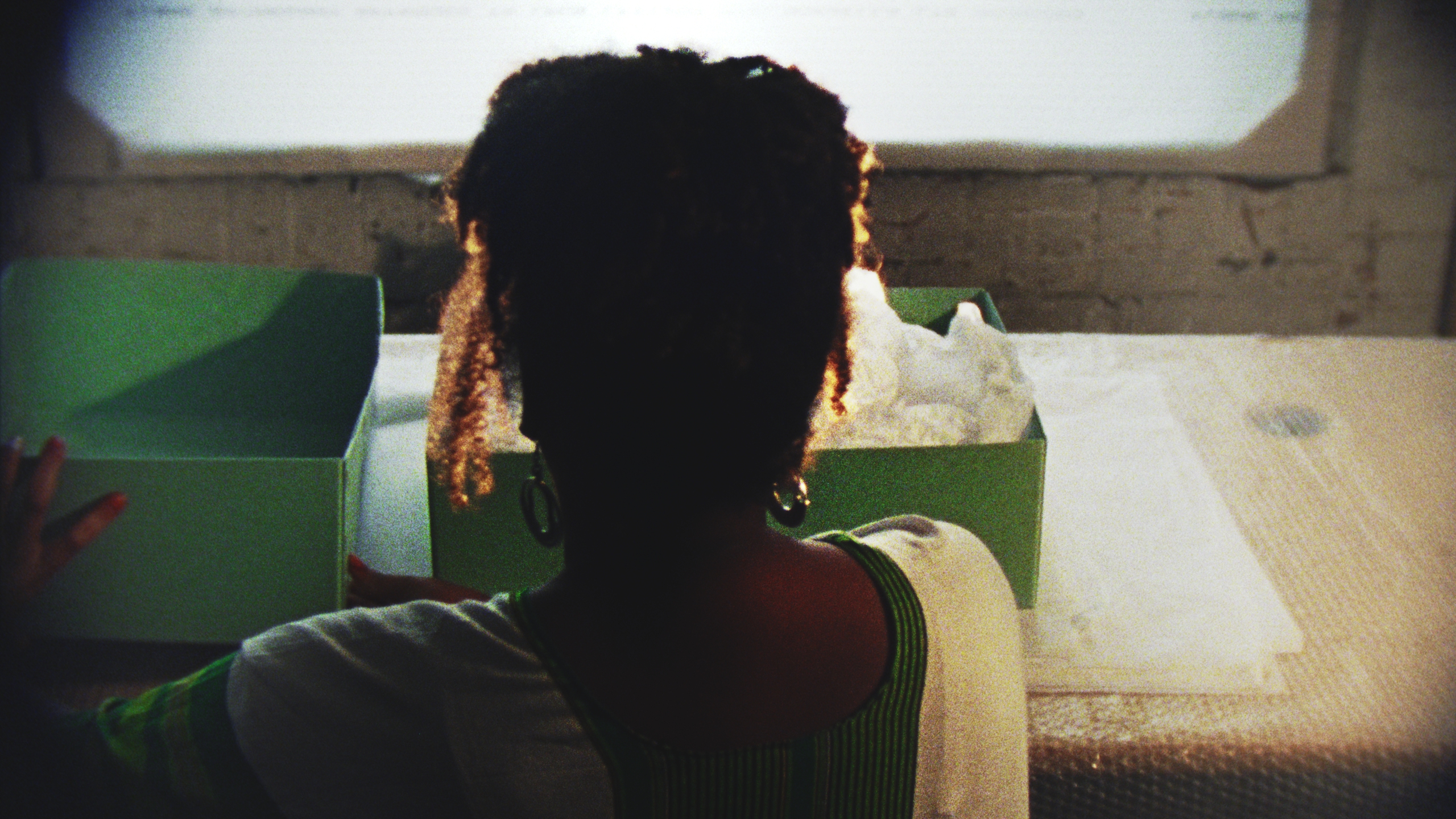
It ends with the figure
coming to a table and opening an green archival box, which they repeat over and
over with the viewer not seeing what the figure sees as it’s filmed from
behind. They then stop and their body and hands become more lit and they wash
their hands. This then cuts to the face of the figure and as sparkly lights
illuminate the face and they leave the building to light. There is then a
peaceful moment with plants and bees which are contrasted with the deadness and
the stillness of the animals and objects in the archive. The film ends with a
sea gull flying over the building and then stills of the young people involved
in making the soundscape, with a dialogue from the elders from our first
soundscape which describes community and importance of holding space and each
other, to hold your friends with love. Then it ends with the independence song
that the elders sang at the archive.
The sound track to the film is made up of 3 vintage Somali tracks from the 1920’s-1950s’, some recorded on vinyl and others on vintage reel to reel tape, sourced By Ibrahim Hirsi and Idel Rasheed from the wonderful archive group Waaberi iphone.
The sound track to the film is made up of 3 vintage Somali tracks from the 1920’s-1950s’, some recorded on vinyl and others on vintage reel to reel tape, sourced By Ibrahim Hirsi and Idel Rasheed from the wonderful archive group Waaberi iphone.
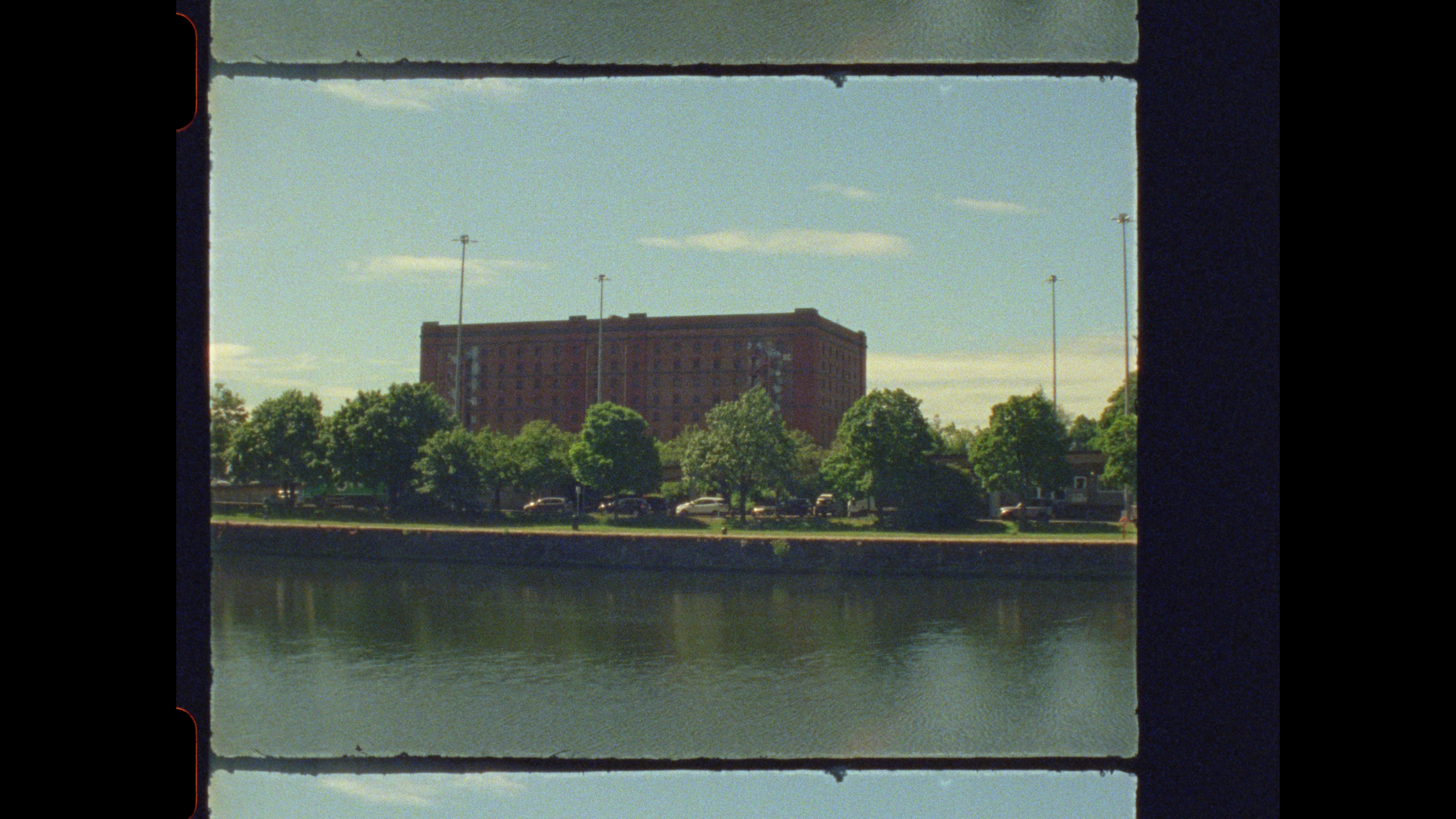
The visuals were filmed
in 16mm film rather than digital to keep with the theme of the materiality of
recording on tape, which gives the film as well as the sound a grainy and
textured quality. The main body of the film was captured with the Aaton LTR 54, with 500T colour negative Kodak film
stock. The portraits were captured with a K-3
16mm camera utilising expired 500T colour negative Kodak film stock. These were captured by a wonderful young filmmaker called
Omar Sultan.
The content of the cassettes that the young people recorded on were edited and turned into a soundscape which formed the basis of a short 10 min film on archives. We loved the process keeping to the theme of using analogue technologies for both the sound and visual element of the project. We like the physicality of analogue technology as it forces you to be present and slow down. You don’t necessarily see/hear what is captured at that time, it’s to fiddly to rewind constantly with tape and with filming it’s a daunting but exciting surprise to see what comes out once it’s been processed. We recognise the privilege of having had the opportunity work with this medium, it is expensive process, time consuming and risky. We appreciate the Arts Council for giving us the chance to experiment with the materiality of capturing our work on archives in this way.
The young people were really interested to explore the themes of language, disconnection and cultural memory and we believe having the chance to experiment practically with cassette tapes and making their own recordings by interviewing family members with this medium was a really interesting way to tease out some of these themes.
Elements of the first soundscape for Camel Meat & Tapes which we did in 2019-2020 with Somali elders was incorporated into the ending of the film. The independence song that the women sang in response to objects from the Empire & Commonwealth Collection which was recorded with cassette tape at Bristol Archives was an important starting point for the film and the film ends with the elders’ voices over images of the young people who were involved in creating the soundscape.
We see a core part of our practice as building with fragments and fractures - through displacement and trauma, many Somali traditions have been lost. We are engaged in a process of cultural recovery while acknowledging the many gaps that still exist. We embrace these fractures. Rather than trying to faithfully recreate a lost Somali culture, we instead focus on the acts of (mis)translation; on how past and present, personal and collective, might be collaged together to create outcomes that resonate today.
Our latest project Audible Tapestries, has allowed us to research Somali nomadic weaving techniques and tactile technologies that can be incorporated into. When you touch the woven object elements of songs and conversations follow particular threads.
This has involved us picking up a thread (figuratively and literally) from a conversation with an elder from our first project about the importance of songs for remembering the weaving pattern and structure in whatever object you are making.
Conventionally, all weaving is done by women in Somali nomadic life from the creation of the Aqal (a portable house) to almost all of the household objects within it. For example, an essential woven object is the Haan, that holds & preserves milk (in particular camel milk) and is also used for churning sheep milk into Subaq (a ghee like substance) which forms a butter essential for preserving food such as camel meat.
The craft and art of weaving has largely gone unacknowledged because it is considered a woman's role which much like most tasks carried out by women is marginalised within society and gets ignored by written archives.
Somali nomadic people have a variety of songs that are used during their work, these are work songs called heeso hawleed which they sing to pass the time, and entertain themselves. The songs can be new or off the cuff, the melody or the words can change.
Ayan and I have been learning traditional nomadic Somali weaving for the past year.
We're open to the fact that we don't know enough about our cultural practices and that we're still learning what it means to embody it. We are trying to relearn what it means to be Somali for us, in our own way with all its complexities.
Through weaving we found an act that can slow us down. A kind of therapeutic practice that has allowed us to weave through the ruptures of Somali diasporic experiences.
We believe that reclaiming Somali culture can help to create roots, a sense of identity, shared experience and belonging. In order to do this, we imagine our projects as spaces of reprieve; enclaves where our community can gather and regenerate through collective, creative actions, such as weaving textiles or preparing food.
Dr. Ilmi’s paper on African ancestral wisdom captures this well:
The content of the cassettes that the young people recorded on were edited and turned into a soundscape which formed the basis of a short 10 min film on archives. We loved the process keeping to the theme of using analogue technologies for both the sound and visual element of the project. We like the physicality of analogue technology as it forces you to be present and slow down. You don’t necessarily see/hear what is captured at that time, it’s to fiddly to rewind constantly with tape and with filming it’s a daunting but exciting surprise to see what comes out once it’s been processed. We recognise the privilege of having had the opportunity work with this medium, it is expensive process, time consuming and risky. We appreciate the Arts Council for giving us the chance to experiment with the materiality of capturing our work on archives in this way.
The young people were really interested to explore the themes of language, disconnection and cultural memory and we believe having the chance to experiment practically with cassette tapes and making their own recordings by interviewing family members with this medium was a really interesting way to tease out some of these themes.
Elements of the first soundscape for Camel Meat & Tapes which we did in 2019-2020 with Somali elders was incorporated into the ending of the film. The independence song that the women sang in response to objects from the Empire & Commonwealth Collection which was recorded with cassette tape at Bristol Archives was an important starting point for the film and the film ends with the elders’ voices over images of the young people who were involved in creating the soundscape.
We see a core part of our practice as building with fragments and fractures - through displacement and trauma, many Somali traditions have been lost. We are engaged in a process of cultural recovery while acknowledging the many gaps that still exist. We embrace these fractures. Rather than trying to faithfully recreate a lost Somali culture, we instead focus on the acts of (mis)translation; on how past and present, personal and collective, might be collaged together to create outcomes that resonate today.
Our latest project Audible Tapestries, has allowed us to research Somali nomadic weaving techniques and tactile technologies that can be incorporated into. When you touch the woven object elements of songs and conversations follow particular threads.
This has involved us picking up a thread (figuratively and literally) from a conversation with an elder from our first project about the importance of songs for remembering the weaving pattern and structure in whatever object you are making.
Conventionally, all weaving is done by women in Somali nomadic life from the creation of the Aqal (a portable house) to almost all of the household objects within it. For example, an essential woven object is the Haan, that holds & preserves milk (in particular camel milk) and is also used for churning sheep milk into Subaq (a ghee like substance) which forms a butter essential for preserving food such as camel meat.
The craft and art of weaving has largely gone unacknowledged because it is considered a woman's role which much like most tasks carried out by women is marginalised within society and gets ignored by written archives.
Somali nomadic people have a variety of songs that are used during their work, these are work songs called heeso hawleed which they sing to pass the time, and entertain themselves. The songs can be new or off the cuff, the melody or the words can change.
Ayan and I have been learning traditional nomadic Somali weaving for the past year.
We're open to the fact that we don't know enough about our cultural practices and that we're still learning what it means to embody it. We are trying to relearn what it means to be Somali for us, in our own way with all its complexities.
Through weaving we found an act that can slow us down. A kind of therapeutic practice that has allowed us to weave through the ruptures of Somali diasporic experiences.
We believe that reclaiming Somali culture can help to create roots, a sense of identity, shared experience and belonging. In order to do this, we imagine our projects as spaces of reprieve; enclaves where our community can gather and regenerate through collective, creative actions, such as weaving textiles or preparing food.
Dr. Ilmi’s paper on African ancestral wisdom captures this well:
[1] Ahmed Ali Ilmi, ‘Somali Dhaqan philosophies and the power of
African ancestral wisdom’ in African Identities (Volume 13, 2015 - Issue 2),
PP. 97-110.
“Somali dhaqan cultural philosophies are indigenous African
philosophies that encapsulate multiple bodies of living comprehensive
knowledge. These philosophies are the founding pillars of Somali societies
inasmuch as they are overarching principles governing Somali peoples. In their
cosmological sense, dhaqan philosophies are the common threads that connect
Somali peoples to their ancestral homelands in Somalia and to a communal way of
life.”[1]
It has been a real privilege to do this slow work of connecting with our own knowledge practices and systems outside the institutional framing of what an archive is. Whether it is weaving, or recording folk songs and conversations, or cooking, it is an expansive way of exploring what it means to be in a community with others. For us we are not necessarily focusing on immediate content creation or outcomes. There is a careful balancing of how we ethically work without commodifying our culture, whilst recognising the material realities of needing to survive and thrive. It’s going where our curiosity to learn about ourselves and others takes us. It’s accepting the risk of experimenting and failure all while still trying to work from a place of love and abundance. Maybe it is that some Somali people have regularly found themselves trapped in situations of precarious survival which leaves little opportunity to pass on knowledge, practices, or traditions. There is a feeling that this has led to a sense of rootlessness, that in turn continues the cycles of trauma. However we are more than our traumas, there is a pleasure in so many aspects of Somali culture and we want to resist the tendency of not giving space to the joyous, pleasurable and the unknowable (not everything has to be shared) even amongst the chaos. I am very thankful not to be in this journey alone, working with Ayan Cilmi has been such a privilege and an essential part of these creative explorations. Also want to thank Ben GJ Thomas who has been a wonderful sounding board and mentor for these conversations and a wonderful ally in the art world.
I want to end with words of the wonderful Audre Lorde:
It has been a real privilege to do this slow work of connecting with our own knowledge practices and systems outside the institutional framing of what an archive is. Whether it is weaving, or recording folk songs and conversations, or cooking, it is an expansive way of exploring what it means to be in a community with others. For us we are not necessarily focusing on immediate content creation or outcomes. There is a careful balancing of how we ethically work without commodifying our culture, whilst recognising the material realities of needing to survive and thrive. It’s going where our curiosity to learn about ourselves and others takes us. It’s accepting the risk of experimenting and failure all while still trying to work from a place of love and abundance. Maybe it is that some Somali people have regularly found themselves trapped in situations of precarious survival which leaves little opportunity to pass on knowledge, practices, or traditions. There is a feeling that this has led to a sense of rootlessness, that in turn continues the cycles of trauma. However we are more than our traumas, there is a pleasure in so many aspects of Somali culture and we want to resist the tendency of not giving space to the joyous, pleasurable and the unknowable (not everything has to be shared) even amongst the chaos. I am very thankful not to be in this journey alone, working with Ayan Cilmi has been such a privilege and an essential part of these creative explorations. Also want to thank Ben GJ Thomas who has been a wonderful sounding board and mentor for these conversations and a wonderful ally in the art world.
I want to end with words of the wonderful Audre Lorde:
As we come in touch
with our own ancient, non-european consciousness of living as a situation to be
experienced and interacted with, we learn more and more to cherish our
feelings, and to respect those hidden sources of our power from where true
knowledge and, therefore, lasting actions comes
- Audre Lorde, Sister Outsider
Fozia Ismail
Fozia Ismail, scholar, cook and founder of Arawelo Eats, a platform for exploring politics, identity and colonialism through East African food.
She has worked with a range of cultural institutions including London School of Economics, Museum of London, Serpentine Gallery, Tate Modern, National Trust, The Courtauld, Bristol Old Vic, Battersea Arts Centre, Wellcome Collection Watershed and Arnolfini.
Her work has been published by Oxford Symposium on Food & Cookery and Vittles. She has been featured on Observer Food Magazine, BBC Radio 4 Food Programme, Oxford Symposium on Food &; Cookery Ox Tales podcast, Food 52, London Eater, Vice Munchies, Vittles & Bristol 24/7.
When not critically eating her way through life’s messiness she can be found plotting with dhaqan collective, a Somali feminist art collective based at the Pervasive Media Studio in Bristol. dhaqan collective is a feminist art collective led by Ayan Cilmi and Fozia Ismail, centering the voices of womxn and elders in our community, and privileging co-creation and collaboration. Our practice seeks to find ways of building imaginative futures that support Somali people here and in East Africa to resist the threats over cultural heritage.
︎ ︎ ︎ ︎ ︎